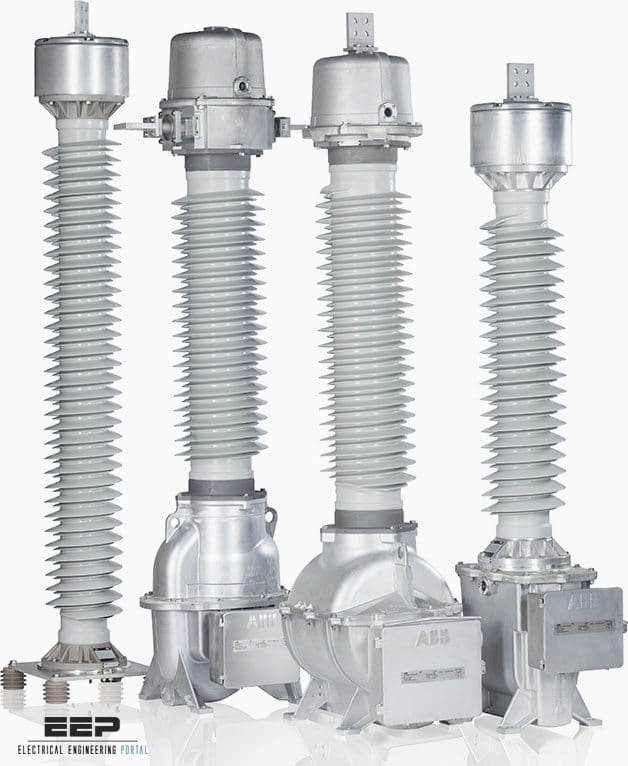
Three main tasks of CTs and VTs
The three main tasks of instrument transformers are:
- To transform currents or voltages from a usually high value to a value easy to handle for relays and instruments.
- To insulate the metering circuit from the primary high voltage system.
- To provide possibilities of standardizing the instruments and relays to a few rated currents and voltages.
Instrument transformers are special types of transformers intended to measure cur- rents and voltages. The common laws for transformers are valid.
Here we will cover six important aspects of using instrument transformer in the power system:
- Terminal designations for current transformers
- Secondary grounding of current transformers
- Secondary grounding of voltage transformers
- Connection to obtain the residual voltage
- Fusing of voltage transformer secondary circuits
- Location of current and voltage transformers in substations
1. Terminal designations for current transformers
According to IEC publication 60044-1, the terminals should be designated as shown in the following diagrams. All terminals that are marked P1, S1 and C1 are to have the same polarity.
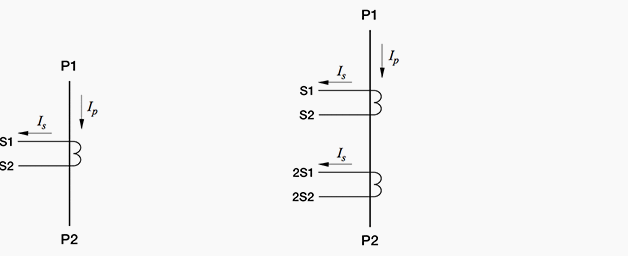
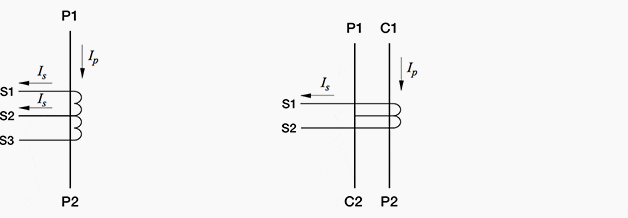
2. Secondary grounding of current transformers
To prevent the secondary circuits from attaining dangerously high potential to ground, these circuits have to be grounded. Connect either the S1 terminal or the S2 terminal to ground.
For protective relays, ground the terminal that is nearest to the protected objects. For meters and instruments, ground the terminal that is nearest to the consumer.
- If there are unused taps on the secondary winding, they must be left open.
- If there is a galvanic connection between more than one current transformer, these shall be grounded at one point only (e.g. differential protection).
- If the cores are not used in a current transformer they must be short-circuited be- tween the highest ratio taps and shall be grounded.
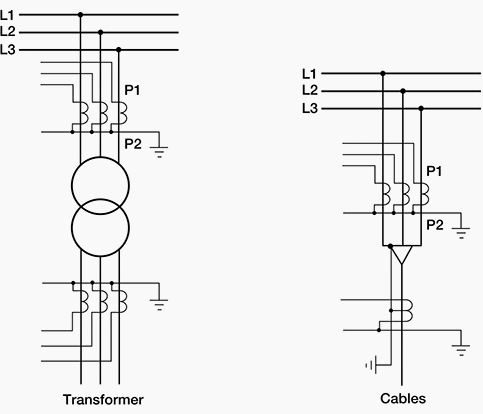
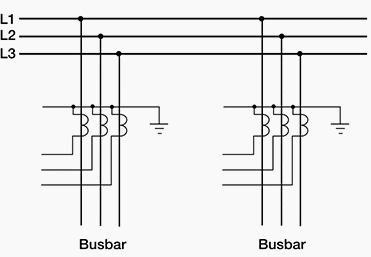
3. Secondary grounding of voltage transformers
To prevent secondary circuits from reaching dangerous potential, the circuits shall be grounded. Grounding shall be made at only one point on a voltage transformer secondary circuit or galvanically interconnected circuits.
A voltage transformer, which on the primary is connected phase to ground, shall have the secondary grounding at terminal n.
A voltage transformer, with the primary winding connected between two phases, shall have the secondary circuit, which has a voltage lagging the other terminal by 120 degrees, grounded. Windings not in use shall be grounded.

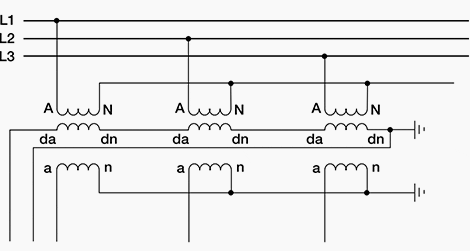
4. Connection to obtain the residual voltage
The residual voltage (neutral displacement voltage, polarizing voltage) for earth-fault relays can be obtained from a voltage transformer between neutral and ground, for instance at a power transformer neutral.
It can also be obtained from a three-phase set of voltage transformers, which have their primary winding connected phase to ground and one of the secondary windings connected in a broken delta.
Figure 10 illustrates the measuring principle for the broken delta connection during an earth-fault in a high-impedance grounded (or ungrounded) and an effectively grounded power system respectively.
From the figure, it can be seen that a solid close-up earth-fault produces an output voltage of
Ursd = 3 x U2n
in a high-impedance earthed system and
Ursd = U2n
in an effectively grounded system. Therefore a voltage transformer secondary voltage of
U2n = 110 / 3 V
is often used in high-impedance grounded systems and U2n = 110 V in effectively grounded systems. A residual voltage of 110 V is obtained in both cases. Voltage transformers with two secondary windings, one for connection in Y and the other in broken delta can then have the ratio:
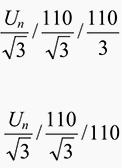
for high-impedance and effectively grounded systems respectively. Nominal voltages other than 110 V, e.g. 100 V or 115 V, are also used depending on national standards and practice.
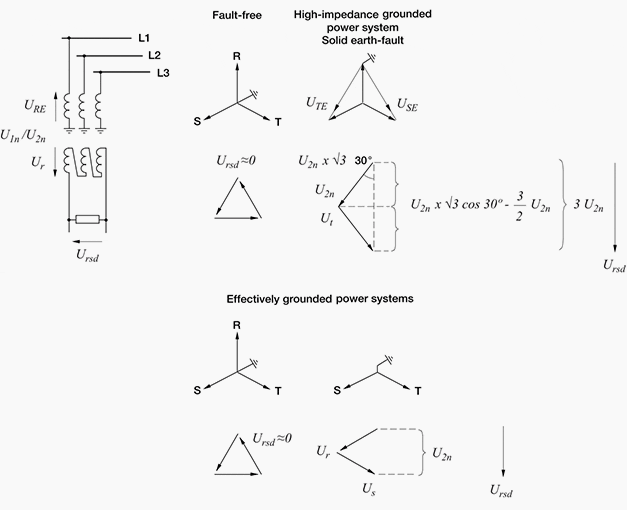
5. Fusing of voltage transformer secondary circuits
Fuses should be provided at the first box where the three phases are brought together. The circuit from the terminal box to the first box is constructed to minimize the risk of faults in the circuit.
The fuses must be selected to give a fast and reliable fault clearance, even for a fault at the end of the cabling. Earth faults and two-phase faults should be checked.
6. Location of current and voltage transformers in substations
Instrument transformers are used to supply measured quantities of current and voltage in an appropriate form to controlling and protective apparatus, such as energy meters, indicating instruments, protective relays, fault locators, fault recorders and synchronizers.
Instrument transformers are thus installed when it is necessary to obtain measuring quantities for the above mentioned purposes.
Typical points of installation are switchbays for lines, feeders, transformers, bus couplers, etc., at transformer neutral connections and at the busbars.
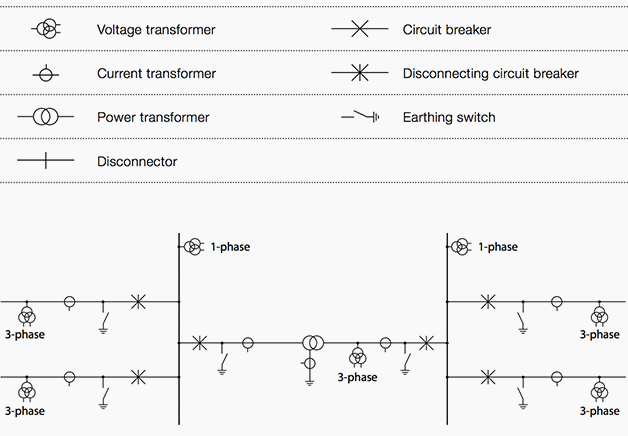
Location in different substation arrangements
Below are some examples of suitable locations for current and voltage transformers in a few different switchgear arrangements.
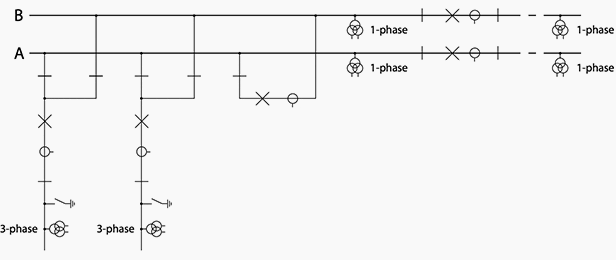
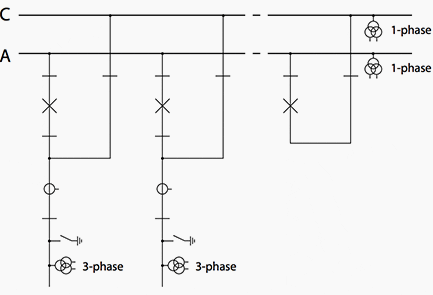
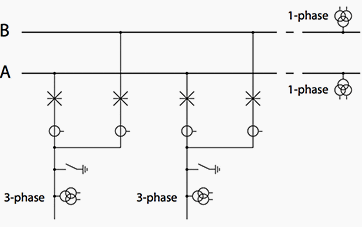

Reference: Instrument Transformers Application Guide – ABB











Thanks for sharing this info, is really so helpful. We can get this article in pdf?
I really enjoyed this article
Dear Mr/Ms ,
Nice to know you .
My name Samnang from Cambodia .
We have a project which talk about CT & VT , LV, MV and HV .
I hope that you will feedback to me soon .
Many thanks
CVT,s primary is earthed or not earthed.
Why do CT’s primary terminal P2 shorted with Tank or Body of Current Transformer?
maintaining the same potential between live part and tank cover of the Current Transformer by the way avoid the breakdown or flashover and maintain healthy and safely operation
How is a hairpin or top core type CT installed in the HV yard of Transmission substation, i.e. the arrangement/orientation of the CT in relation to P1 and P2 and the plant being protected?
In substation why we use 3 current transformers and only 2 potential transformers, why not 3 PTs?
what is the difference between open delta connection and closed delta connection of voltage transformer
also open delta, how many winding available in the circuit?
thanks for your interesting articles. i have a question: is it true if we ground 3 VTs in MV boards. when we use two VTs the connection is broken star, but when we use 3 VTs should we ground their n point or ot???
why fault current is not considered in CVT? Does fault current to be consider in CVT?
Why are only two CT’s used for metering on the MV side of a supply, yet 3 CTs are fitted in the MV switch gear panel
If the energy meter is a 2-element meter then its ok to use 2 CTs but now a days all the energy meters are 3 element meters and therefore it is advisable to use all the 3 CTs for metering purpose for more accurate measurement of energy.
Dear Engineer Edvard Csanyi,
I am a regular and ardent reader of your fantastic and elaborate electrical article. You are doing a very wonderful and spectacular job by educating an electrical engineer world wide.
Please I want you to send me details calculation on how to arrive at values
of High-impedance grounded power system solid earth fault and Effectively grounded power system.
The article is from electrical-engineering-portal.com on the topic: Instrument transformers (CTs,VTs) in the system. Thanking you for a favorable response.
Email: [email protected]
Why do we always have CTs installed first before VTs inside Metering Panel
I think the follwing two aspects are important-
1) If the CT is installed first before VT, in that case the CT will (also) carry the magnetising current of VT circuit and therefore if the meter with a good accuracy class will also measure/record the energy (although negligibly small) consumed by the VT circuit,
2) In case where the CT is installed first, any fault in the VT means the CT will carry the fault current and hence more prone to failure,
Standard of packing for CT’s,CVT’s,lightning arrestor and gas circuit breakers for 220kv and 330kv.please send some photo and there specification for packing so that they do not get damaged in transit.
Regards
Ajay
can we use measurement CT’s for protection relays
Actualy not, cause measuring CT use for measure purpose not in protection.
also secondary current for measuring CT is 1A . which is less than protection CT secondary current.
@K K. MURTY
sir, A 22kv PT of two core , which one is used for metering and another one made into open delta and connected with a external resistance . I dont why they doing
but i surf it on net , if found only its residual voltage on ground fault .
Can u briefly explain y they puuting this
pl send me the different fault found in current transformer,and cause,mitigation techniques for current transformer….how to reduce the fault on current transformer? also condition monitoring techniques for current transformer….
Hi Edvard,
Please I am looking for the clearance (mm) between (A1 & A2) for a single VT connected to a 22kV cable box terminal phases B & C.
Thanks Edvard
Regards
Frank
I love ur presentation am interested in ur Electric Testing and Maintenance VIDEO
Measuring HT and LT ELECTRICAL QUANTITIES USING CT PT instrument transformers I
Sir, oil filling plug set manufacturing, use cts and pts tank
Very useful for beginners an professional engineers
i would like to get or receive weekly updates from your portal.
K K. MURTY
—
5P10 & 5P20 Class CTs: They are generally used for Over current (Instantaneous and IDMT relays) and E/F protection of Feeders, Transformers etc.
(i) 5 signifies the % limit of composite error.
(ii) P signifies the Protection core,
(iii) 10, 20 signify the quantum of fault current as multiple of the rated current or ALF(Accuracy Limit Factor) up to which the CT shall have the defined percentage of composite error i.e. ± 5%. During fault condition the fault current is many times the rated current. Standard Accuracy Limit factors as per IS: 2705 and IEC60044-1 are 5, 10, 15, 20 & 30.
Accuracy limit factor is inversely proportional to the rated VA burden i.e. if the connected VA burden is lower than the rated one, the limit of accuracy shall be maintained beyond the declared one.
The formula for actual ALF;
ALF(ACT)= ALF(RTD) x {Sin+Sn(Rated Burden)}/{ Sin+Sa (Actual Burden)}.
Example:- Calculate actual Accuracy limit factor if secondary burden is reduced to 1/3rd, if CT rated as 200/5 A,5P10,15VA and Rct =0.15Ω?
ALF Rated=10(From CT data 5P10),
Sin (Burden due to internal resistance of the CT) = (5A)squre x 0.15=25 x 0.15=3.75VA,
Sn (Rated burden) = 15VA (From CT data), Sa(Actual Burden) = 15/3= 5VA,
ALF(ACT) = ALF(RTD) x {Sin+Sn(Rated Burden)}/{ Sin+Sa(Actual Burden)}
ALF(ACT) = 10x (3.75+15)/(3.75+5) = 10×18.75/8.75 = 21.42
It is clear from the above example that the ALF increases if the connected actual burden is lower than the rated one. The CT in this condition shall maintain accuracy up to fault current of 21.42 times of rated current as against 10 times the rated current and shall not saturate till then.
PS Class CTs: Though abbreviation PS is not elaborated anywhere, however it may be called as “Protection Special Class” CT core. This core is used particularly where current balance is precisely required to be maintained. In Differential protection, balance is the prime requirement between secondary currents of associated CTs of either side of the equipments. Differential and restricted E/F Protection of Transformers and Overall Differential Protection of Generators need such CTS.
The 5P10P or 5P20 class CTs cannot match the Characteristic as that of PS class. The core of PS class is such that very high current is needed for saturation of the core. Knee point voltage of the CT is of valid importance. The developed voltage across the relay terminals should be lower than the Knee point Voltage of the CTs.
From: Er.K.K.Murty, B.E.(Hons)Electrical,FIE.
Retd.Chief Engineer(Testing & Commnu),M.P.State Electricity Board.
Jabalpur.
Email ID:[email protected]
Sir thanks a lot … Very informative about Accuracy limit factor . Plz elaborate ALF. I am still confused about this factor .
Use full page thamkq sir 12
Dear Edvard Can you plz provide about capacitor bank? where n working procedure.